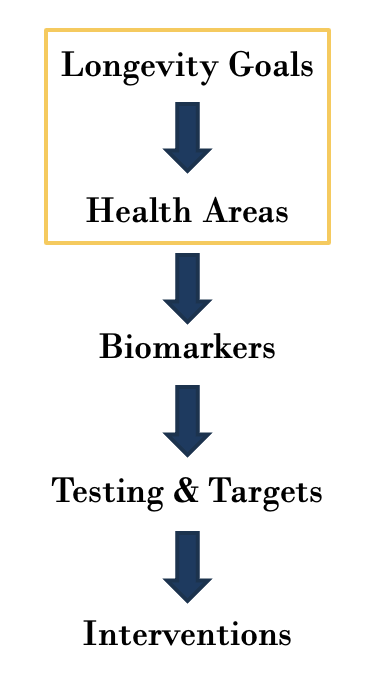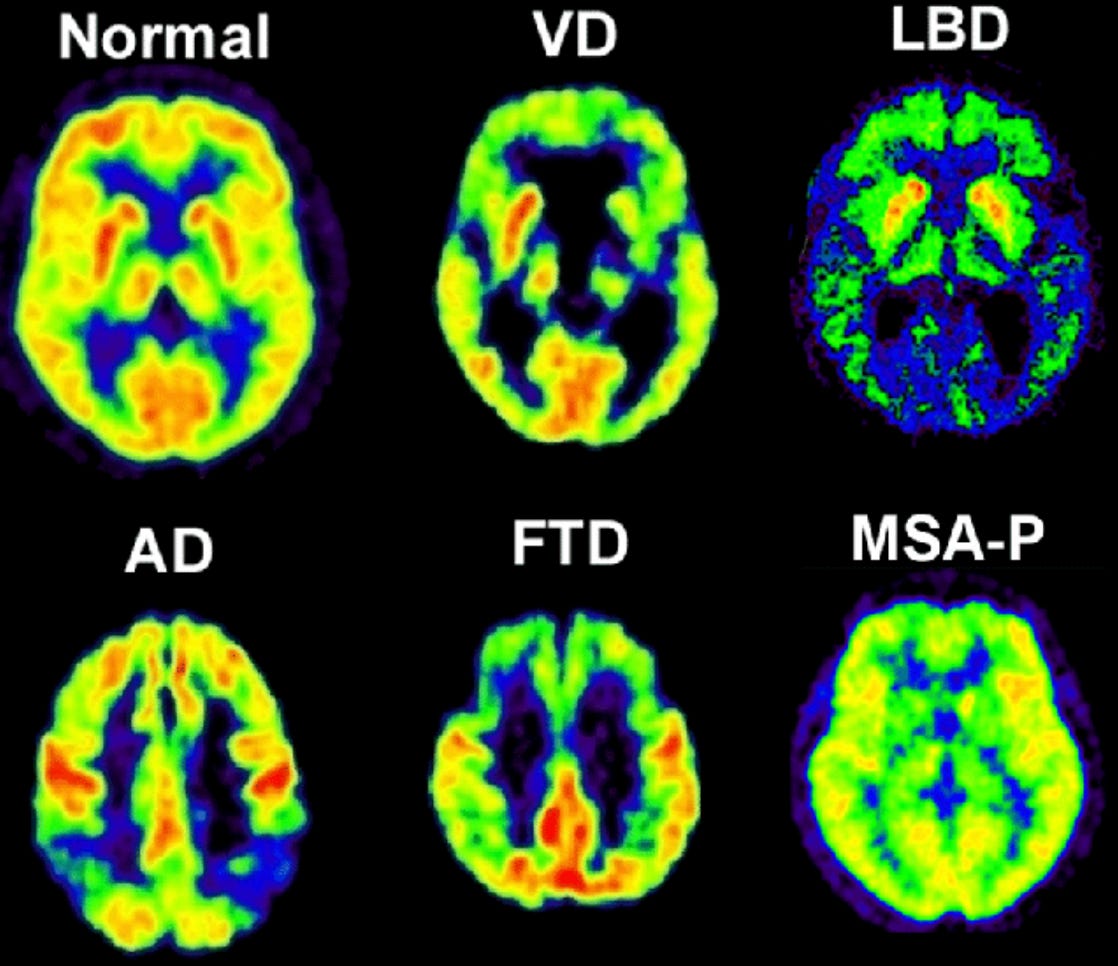Longevity Medicine Essentials #2 | The Pillars of Longevity, Part 1
Longevity Medicine Essentials #2
Welcome to the second article in the Longevity Medicine Essentials series!
Last time I introduced Longevity Medicine, why it’s important, and how you can start.
In this article I’ll explain:
How to take the abstract concept of Longevity and translate it into actions
The surprisingly simple process of defining your Longevity goals
The pillars (key areas) of health we address with Longevity Medicine
Why these health areas are critical for lifespan and health span
🙏 Thank you for being here. If this resonates, please subscribe and forward to a loved one who wants more healthy years.
Prefer video? Here is a Youtube video covering the content of this article
Longevity Medicine - From Abstract to Actionable

So you’re excited about Longevity Medicine, but how the heck do you even get started?
Here’s the framework we use for all of our patients.
We start by defining your Longevity Goals because it has to link to what you want out of your health and life - or else what’s the point!
Next we detail out everything that might prevent you from getting to these goals, grouped into health areas (e.g. cancer).
We call the most important health areas the Pillars of Longevity.
These include the most common diseases impacting lifespan and health span, and the critical physical and mental abilities required for you to have the life you want
Our next task is to understand what we need to measure now to ensure you are on track to reaching those goals. These are the Biomarkers.
For each biomarker we define how we will test it, what is “on-track” vs. “off-track,” and how often to re-test. I call this step Testing & Targets.
Finally for the “off-track” biomarkers we implement Interventions, which include lifestyle (diet, exercise, sleep, stress management), supplements, and medications.
The Longevity Medicine Essentials series will take you through all of this. Today we’re going to cover Longevity Goals and part 1 of the Pillars of Longevity.
Defining Your Longevity Goals
We ask each of our patients two simple questions to define their Longevity Goals:
Which decade do you want to live until? (80s, 90s, 100s, etc.)
What activities do you want to do at that age? (Do your taxes? Ride a bike? Carry groceries?)
If it seems really simple, it’s because it is!
The Pillars of Longevity Medicine
Now let’s consider what might prevent you from reaching your Longevity Goals.
If you were in my office I’d derive a list of health areas you are personally susceptible to by reviewing your medical and family history, but for the purposes of this series we’ll focus on the areas EVERYONE needs to cover.
These common health areas are the Pillars of Longevity Medicine because they are so common and impactful.
For each of these pillars I’ll explain how they impact lifespan and / or health span and detail the diseases that make them up.
I divide the pillars into chronic diseases to prevent and abilities to optimize:
Diseases to prevent: Cardiovascular disease, dementia, diabetes, cancer
Abilities to optimize: Sleep, Strength, Aerobic fitness, Stress management
Today I’m focusing on the disease areas starting with most common - cardiovascular.
Cardiovascular Disease
Cardiovascular disease (CVD) is devastating because it’s the #1 killer worldwide causing 33% of deaths and is a major cause of disability. 640 million people globally live CVD and the vast majority suffer a significant drop in quality of life. We are extra vigilant with CVD in our practice because it’s so common, impactful, and (thankfully) preventable.
Imagine not being able to walk a block without stopping to catch your breath, and forget about playing pickleball…
If you get any of the following diseases that might be your reality:
Coronary heart disease (which eventually lead to heart attacks)
Cerebrovascular accidents (stroke) & transient ischemic attacks (mini stroke)
Congestive heart failure
Peripheral artery disease
Valvular heart disease (e.g. aortic stenosis)
Aneurysms (aortic aneurysm is particularly deadly)
Arrhythmia
The good news is we have many tools to identify CVD early and prevent it, which I’ll outline in a future newsletter (coming very soon!).
Dementia
Dementia is one of the most feared chronic diseases because many of us have seen parents or grandparents seemingly lose their minds in front of our eyes. It’s also irreversible and very difficult to slow down once it starts - fun right?
Prevention is the key with dementia simply because it’s our only option.
Sadly dementia is the 7th leading cause of death worldwide, there are 50 million active cases, and it’s rising with the aging population. Most of the other chronic diseases we discuss impact our physical abilities, but this one attacks our minds which feels particularly sadistic.
All dementia types include cognitive declines in multiple domains, in particular memory, and eventually lead to an inability to function. Here are the different types:
Alzheimer’s Dementia (60-70% of cases) - anterograde memory loss and difficulty with language are prominent, followed by personality changes
Vascular (15-20%) - step-wise drops in function starting with executive functions
Lewy Body (5-10%) - starts with visual hallucinations and tremors
Fronto-temporal (2-5%) - starts with personality changes, commonly begins in 60s
Luckily there is a lot we can do habit-wise to prevent dementia and increasingly we are inventing better tools to detect it early enough to alter the course. We’ll dive into all we know about preventing dementia in the coming weeks.
Diabetes
Diabetes is the scourge of modern living with 500 million adults (~10%) worldwide impacted and an estimated 1 billion + with insulin resistance - the underlying process leading to diabetes.
Yes, you read that right, 1.5 billion people impacted.
Diabetes have a 25-30% increased risk of death that rises with a higher average blood glucose. This risk comes from higher rates of major killers:
2 to 4 times higher risk of cardiovascular disease
1.25 to 2 times higher risk of cancer
1.5 times higher risk of dementia
2 to 3 times higher risk of fatty liver disease (#1 cause of liver failure in the US)
Phew.
OK now for some good news - diabetes is completely preventable with proper habits, and even if you find yourself with diabetes or insulin resistance we have many medications to reverse it. More on that soon.
Cancer
The one that sent me on the path to Longevity Medicine.
Cancer is the #2 killer worldwide and there are more than 20 million new cases a year, so it’s a big deal. Cancer is also unique in that the treatments themselves significantly lower quality of life.
Another unique aspect of cancer is it’s not one thing - any cell type could start mutating out of control. Here are the main ones we watch for:
Most diagnosed: breast > lung > prostate > colorectal > melanoma
Most deadly: Lung > colorectal > pancreatic > breast > liver
Cancer is so scary because it’s hard to predict risk outside of very obvious factors like excessive alcohol or cigarette smoking. For the most part it’s random mutations, which means the name of the game is early detection and treatment.
Because of this when we dive deeper into cancer prevention we focus on early detection methods rather than specific preventive actions.
Up next - The Pillars of Longevity Medicine, Part 2
In the next article I’ll review the abilities to optimize for quality of life.
Then we’ll begin to detail the various biomarkers to check going through one health area at a time starting with cardiovascular disease.
Thank you for reading and make sure you subscribe to get the newest info directly to your inbox!









